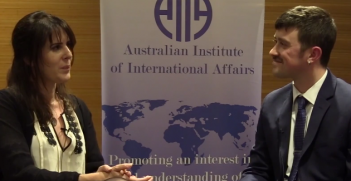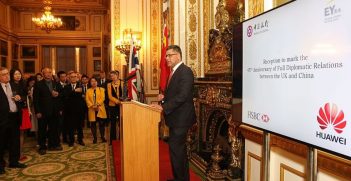New Trade Agenda to Shape Australia-EU FTA

The first scoping study into the likely effect of an EU-Australia free trade agreement suggests benefits for Australia. A new trading approach offers the opportunity for even bigger gains.
On 13 September 2017, the EU published the results of a scoping study into the Australia-EU Free Trade Agreement (FTA). This ‘impact assessment’ report went unnoticed in Australia, even though there could be major bilateral advantages to the FTA.
To summarise, the modelling in the study predicts a €2.7-4.2 billion (AUD$4.1-6.4 billion) gain in GDP for Australia by 2030 from the FTA, depending on the extent of the agreement. It expects an increase in Australia’s trade with the EU of €6.9-11.1 billion. Also expected, is an increase in EU exports to Australia, particularly in the sectors of machinery and motor equipment, and also chemicals. Similarly, Australia will export more to the EU, particularly in several services sectors and the agrifood realm.
The authors of the report were not able to assess the full impact of non-tariff trade barriers (NTBs), therefore they left any reductions of agricultural NTBs out of their model-based simulations.
In July this year, Australian Minister for Trade, Tourism and Investment, Steven Ciobo, still said that negotiations with the EU will focus on lowering tariffs for Australian exports. There is likely to be some gain for Australia from lower EU tariffs, as the EU scoping study demonstrates. But under WTO rules, quotas for manufactured goods have largely been converted to tariffs and average tariffs for such goods are now very low, so efforts to only lower bilateral tariffs could be a wasted opportunity.
The bigger gains in the Australia-EU FTA are very likely to be in addressing the main ‘behind the border’ NTBs between Australia and the EU. These relate to diverging regulations in Australia and in the EU and continue to stand in the way of trade, despite the conversions of quotas and the reductions of tariffs.
The main opportunity for the Australian and EU negotiating teams, which are expected to get underway within the next few months, is to identify and apply novel ways to deal with these NTBs. That would not only be to the mutual benefit of the Australian and EU economies, it would also set an example to other proposed FTAs on how this can be done. Liberalising these NTBs is one of the main goals of the new trade agenda that some countries are now pursuing in order to take their bilateral FTAs well beyond agreements in the WTO.
A book published by ANU Press, Australia, the European Union and the New Trade Agenda, substantiates the reasons why the Australia-EU FTA should pursue such potential gains from trade liberalisation through this FTA.
The new trade agenda
Addressing NTBs in multilateral fora like the WTO is difficult to achieve. For that reason, bilateral and plurilateral agreements are increasingly aimed at liberalising the ‘behind the border’ regulatory NTBs that impact on international trade and investment. Such impacts are most commonly seen in the trade of services (such as licensing and certification requirements), trade in goods (divergent technical product standards), foreign direct investment flows, public purchasing tender processes, and competition policy issues. This new trade agenda goes well beyond current WTO rules and envisages WTO-plus FTAs.
Importantly. both Australia and the EU can draw on rich experiences with overcoming and lowering such NTBs for goods and services. For the EU, experiences such as the creation of the single market in Europe and also the WTO-plus Comprehensive Economic and Trade Agreement (CETA) with Canada can inform their policy actions. Equally, Australia has also gained similar insights through the cumulative deepening of the Australia-New Zealand Closer Economic Relations Trade Agreement.
In addition, both Australia and the EU have well-developed regulatory standards and enjoy high equivalence of regulatory intent. This could open the way for mutual recognition of technically different, but broadly equivalent standards that impact on trade across a wide range of products and services.
NTBs in services trade
Addressing NTBs in services is particularly important, as two-way Australia-EU services trade has grown much faster in recent decades than goods trade. In CETA, the EU agreed for the first time to the liberalisation of services trade in an FTA according to the ‘negative-listing’ approach. It takes commitments on all services in bilateral trade, apart from those inscribed on an exceptions list. This is the approach typically taken by Australia in its FTA negotiations. As such, the Australia-EU FTA should capitalise on such common ground.
In specific areas of bilateral services trade between Australia and the EU, such as business and professional services, mutual recognition of broadly equivalent but technically divergent licensing and certification regulations could play an important trade-creating role in the Australia-EU FTA. More important benefits would come from the mutual recognition of divergent but broadly equivalent professional qualifications requirements.
A stepping stone
In general, mutual recognition and/or harmonisation of standards would neutralise the impact on trade of regulatory divergences between Australia and the EU. Current examples include food standards, packaging and labelling standards, sustainable production and environmental standards, and differing product standards on an increasingly wide range of semi-manufactured goods or components involved in intra-industry trade.
There would also be practical trade benefits for both Australia and the EU in reducing the negative trade and investment impact of divergent regulations that affect public procurement policies (especially at a sub-member state level in the EU and at sub-federal level in Australia), competition policies, and investment restriction and protection policies.
Australia-EU FTA negotiations could be highly focused on breaking new ground in the liberalisation of NTBs relevant to key areas that need to be resolved. They could thus play a role in advancing the twofold trade policy objectives espoused by both Australia and the EU:
- liberalising NTBs through a bilateral FTA that goes beyond the current rules of the WTO; and
- ensuring that the new WTO-plus FTA acts as a stepping stone to better WTO rules and more effective multilateral negotiations.
Brexit
Australia and the EU could agree from the outset that the significance of the Australia-EU FTA lies well beyond tariffs and therefore could advance a greater good. If so, it would be unlikely that the negotiation process will be side-tracked by Great Britain leaving the EU. In fact, Brexit would increase the urgency of concluding the Australia-EU FTA, because Australian firms can no longer rely on a base in the UK to deliver Australian goods, services and investment into the much larger single market of the EU.
Pierre van der Eng is associate professor and Reader in International Business at the Research School of Management at Australian National University.
Donald Kenyon AM is associate professor and visiting fellow with the Centre for European Studies, Australian National University. He is a former ambassador to the GATT/WTO and was ambassador to the European Union, Belgium and Luxembourg (1997-2000).
This article is published under a Creative Commons Licence and may be republished with attribution.





